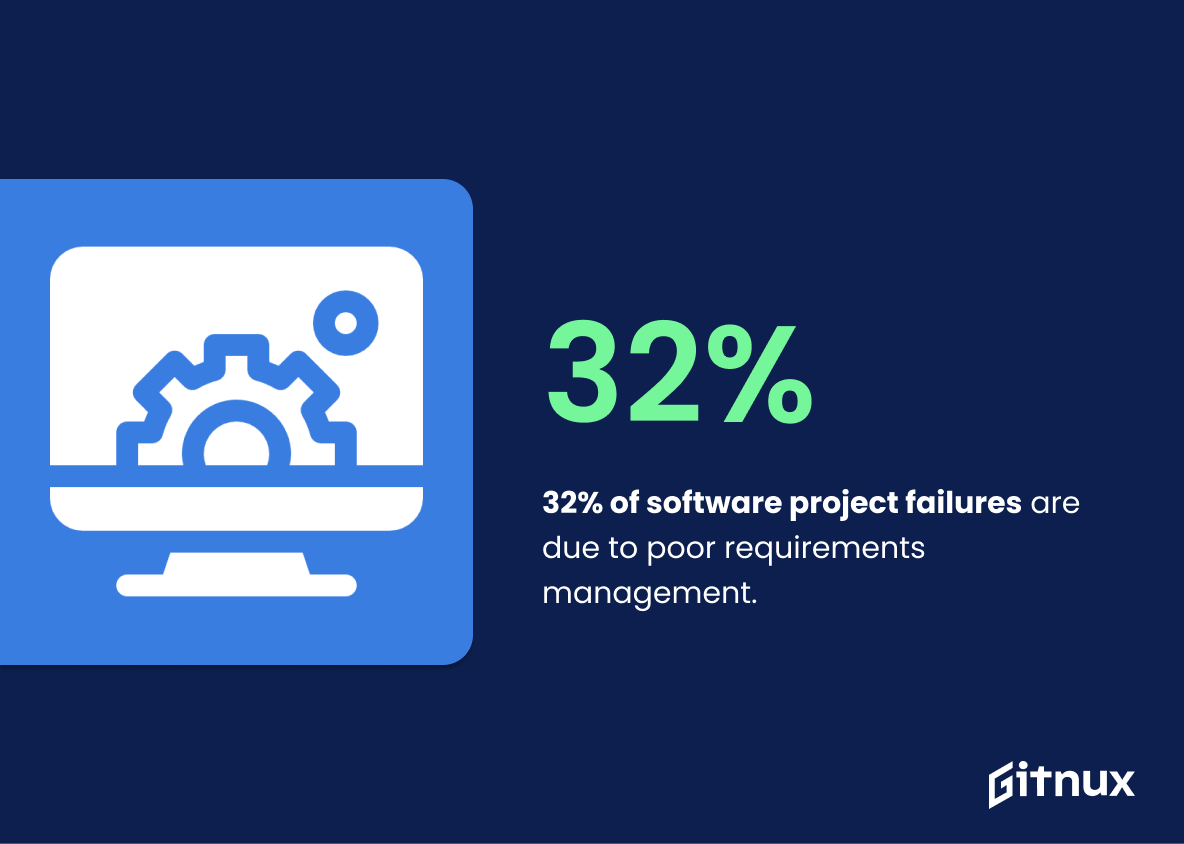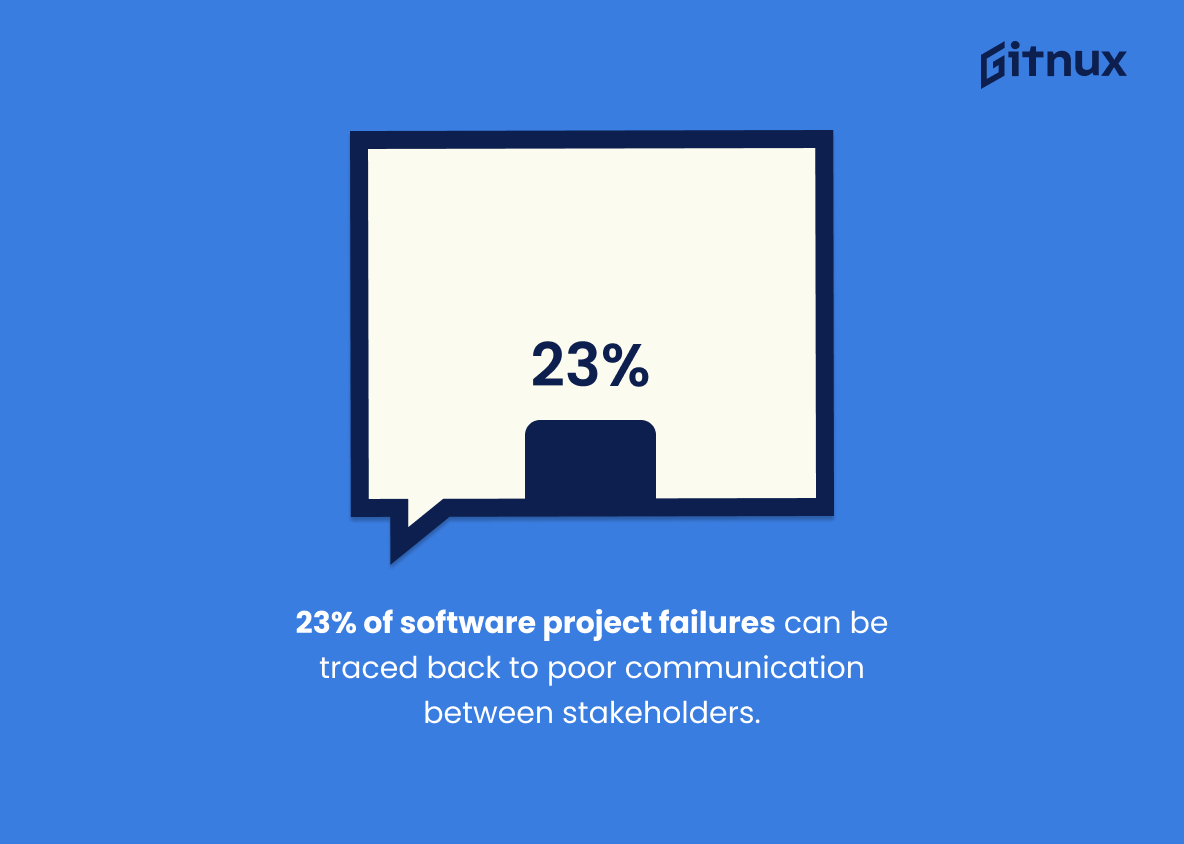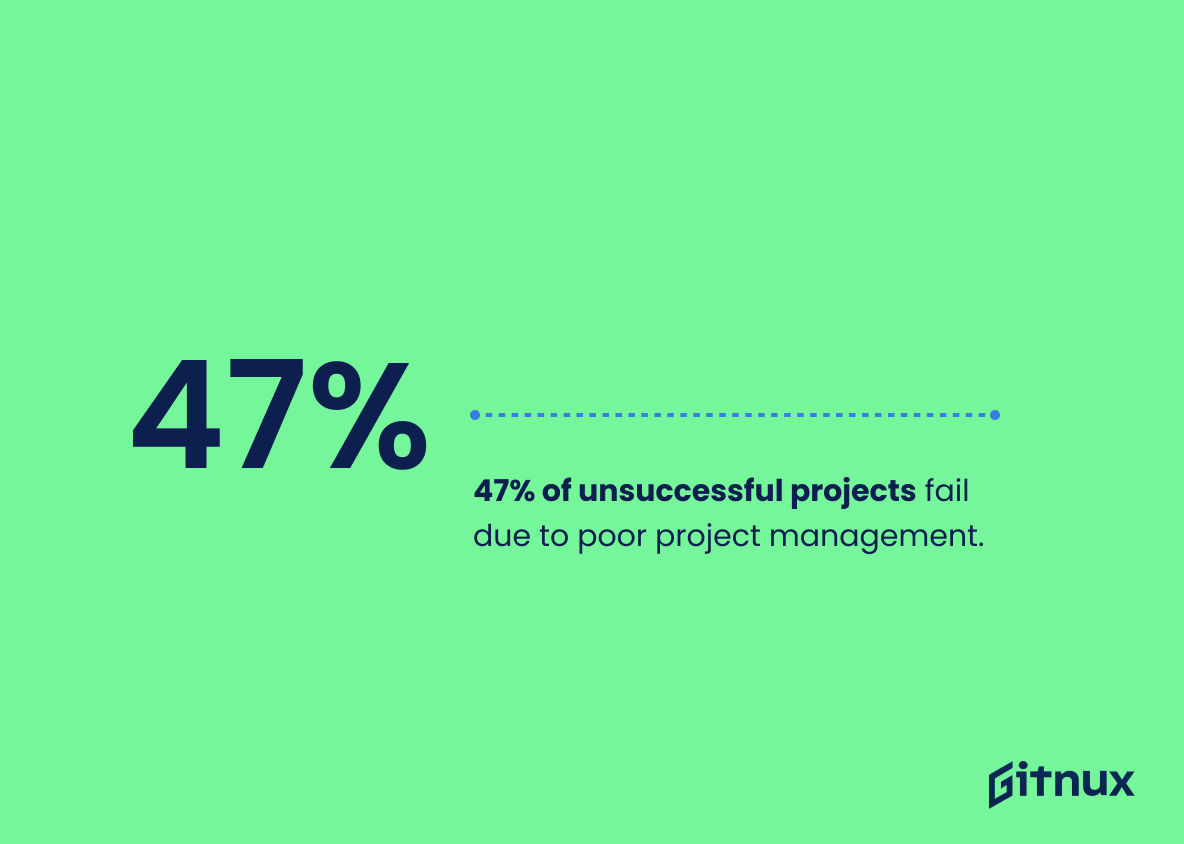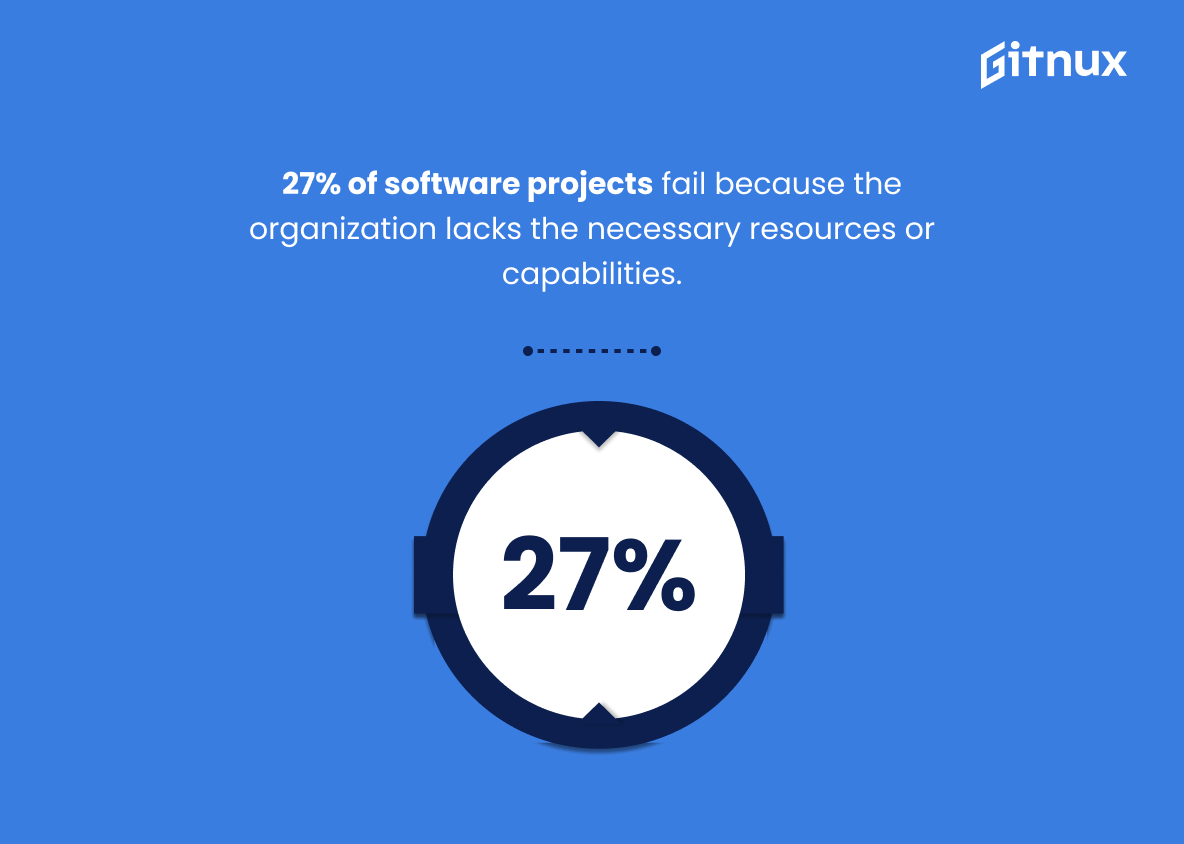Software project failure is a common occurrence in the IT industry, with statistics showing that only 14% of software projects are successful. This blog post will explore some of the most recent and relevant statistics on software project failures to provide insight into why these projects fail so often. We’ll look at data from various sources such as The Standish Group’s Chaos Report, IEEE Explore, Project Smart UK, InfoQ Articles and PMI Pulse Reports to get an understanding of what causes software projects to fail. From this analysis we can gain valuable insights into how organizations can better manage their resources and capabilities for more successful outcomes in future endeavors.
Software Project Failure Statistics Overview
32% of software project failures are due to poor requirements management.
This statistic is a stark reminder of the importance of proper requirements management in software projects. Without a clear understanding of the project’s goals and objectives, it is impossible to ensure that the project is completed on time and within budget. Poor requirements management can lead to costly delays, unexpected costs, and ultimately, project failure. This statistic serves as a warning to software project managers to pay close attention to the requirements management process and ensure that it is done correctly.
23% of software project failures can be traced back to poor communication between stakeholders.
This statistic is a stark reminder of the importance of communication between stakeholders in software projects. Poor communication can lead to a lack of understanding of the project’s goals, a lack of clarity on roles and responsibilities, and a lack of trust between stakeholders. All of these can contribute to a project’s failure, making communication a critical factor in the success of any software project.
47% of unsuccessful projects fail due to poor project management.
This statistic is a stark reminder of the importance of proper project management in the success of a software project. It highlights the need for project managers to be well-versed in the fundamentals of project management and to be able to effectively manage the project from start to finish. Without proper project management, the chances of a software project failing are significantly increased.
46% of CIOs believe that their organization has more projects than people can manage.
This statistic is a telling indication of the pressure that CIOs are under to manage an ever-increasing number of projects. It suggests that the resources available to them are not sufficient to meet the demands of their workload, which could be a major contributing factor to software project failure.
Only 52% of software projects pass the post-release test for quality.
This statistic serves as a stark reminder that software projects are far from guaranteed success. It highlights the importance of rigorous testing and quality assurance to ensure that projects are released with the highest possible quality. It also serves as a warning to those who may be tempted to cut corners in the development process, as the consequences of releasing a sub-par product can be dire.
User involvement accounts for 15.9% of software project success.
The statistic that user involvement accounts for 15.9% of software project success is a crucial reminder that user input is essential for the success of any software project. Without the involvement of users, the project is likely to fail due to a lack of understanding of the user’s needs and preferences. This statistic serves as a reminder that user involvement is a key factor in the success of any software project and should not be overlooked.
Over 80% of software project managers admit they have knowingly shipped a flawed product.
This statistic is a stark reminder of the reality that software project managers face: the pressure to ship a product, even if it is not perfect. It highlights the need for better processes and tools to ensure that software projects are successful and that the products released are of the highest quality.
Approximately 40-50% of software projects are delivered late.
This statistic is a stark reminder of the prevalence of software project delays, and serves as a warning to those who embark on software projects without proper planning and foresight. It highlights the importance of taking the necessary steps to ensure that projects are completed on time and to the highest standards. It also serves as a reminder that software projects can be complex and unpredictable, and that it is important to be prepared for any potential delays or issues that may arise.
78% of software projects experience scope creep, which often leads to project failure.
This statistic is a stark reminder of the prevalence of scope creep in software projects, and how it can be a major contributing factor to project failure. It highlights the importance of staying vigilant and managing scope creep effectively in order to ensure the success of a software project.
27% of software projects fail because the organization lacks the necessary resources or capabilities.
This statistic is a stark reminder of the importance of having the right resources and capabilities in place when embarking on a software project. Without the necessary resources and capabilities, the chances of success are drastically reduced, making it essential for organizations to ensure they have the right tools and personnel in place before beginning a project.
Conclusion
The statistics presented in this blog post demonstrate the prevalence of software project failure. Over 31% of projects are canceled before completion, and only 16.2% are completed on time and within budget. Poor requirements management, communication between stakeholders, lack of resources or capabilities, scope creep and poor project management all contribute to a high rate of failure for software projects. Agile methodology appears to be more successful than non-agile approaches when it comes to meeting budgets; however organizations still need to ensure they have the necessary resources available if they want their projects to succeed.
References
0. – https://www.www.apm.org.uk
1. – https://www.www.semanticscholar.org
2. – https://www.www.techwell.com
3. – https://www.www.infoq.com
4. – https://www.www.researchgate.net
5. – https://www.hbr.org
6. – https://www.www.mckinsey.com
7. – https://www.www.projectsmart.co.uk
8. – https://www.www.slideshare.net
9. – https://www.www.inloox.com
10. – https://www.www.agilebusiness.org
ZipDo, cited June 2023: Software Project Failure Statistics










